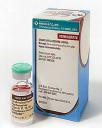 This week’s review is a potpourri of interesting if not groundbreaking articles.
This week’s review is a potpourri of interesting if not groundbreaking articles.
The pharmaceutical industry certainly got off easier this week (see last week’s shortcuts) and the New York Times focused instead on the “industrialization” of the art of medicine. A hospital group …

 Welcome to our first theme issue of ShortCuts. This week, we decided to focus on the tribulations of the pharmaceutical industry, which recently seems to be plagued by new FDA advisories and NY Times exposés.
Welcome to our first theme issue of ShortCuts. This week, we decided to focus on the tribulations of the pharmaceutical industry, which recently seems to be plagued by new FDA advisories and NY Times exposés. By: Mitchell Charap, MD Senior Associate Program Director, NYU Internal Medicine Residency Program
By: Mitchell Charap, MD Senior Associate Program Director, NYU Internal Medicine Residency Program Welcome to the first posting of our NYU Department of Medicine’s Clinical Pathology Conference. Use the links below to review the case and the radiological findings. Our faculty and medical students will be attempting to diagnose this unknown …
Welcome to the first posting of our NYU Department of Medicine’s Clinical Pathology Conference. Use the links below to review the case and the radiological findings. Our faculty and medical students will be attempting to diagnose this unknown … Commentary By: Marshall Fordyce, PGY-3
Commentary By: Marshall Fordyce, PGY-3